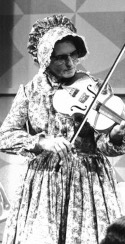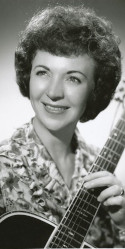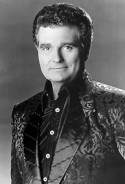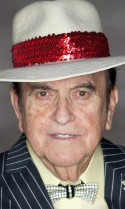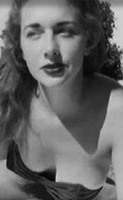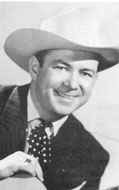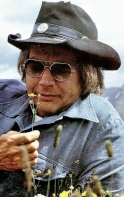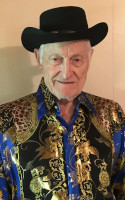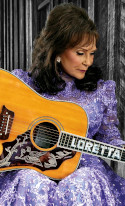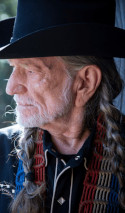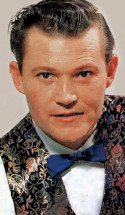The legends of South African country music . The legends are Lance James, Barbara Ray, Bobby Angel, Matt Hurter and Tommy Dell , Alan Ladd, Cheree, JJ Stephens and Jason Bradleyand many other Country Stars and Legends.



Lance James has more than 60 albums to his name, the worst of which was recorded way back in the 60s already! Lance is known as the Big Daddy of South African country music and has received many awards during his career of almost 50 years. The ATKV dubbed him "a living icon", and Vonk magazine recently gave him a "Lifetime Achievement" for his contribution to the South African music industry.Lance also recorded various albums with Queen of Country Barbara Ray. Barbara emigrated fron Scotland to South Africa in die mid-60s, and has since become a household name. Twenty-two of her albums went gold, and she won many awards for her contribution to country music. Barbara is especially well-known for her hits "I don"t wanna play house" and "Down the Mississippi", and also tours with one of SA"s other great country legends, Bobby Angel.Bobby Angel has been known as the King of Country since he took the music world by storm with his 1975 hit, "You ask me to". Many more hits followed, and his latest release, "Wals van die lewe", confirmed Bobby"s status as evergreen musician.Tommy Dell, also known as The Killer, and Sally Vaughn represented South Africa in Nashville in 1984. The main singer of the Elvis group The Jordanaires was highly impressed with Dell"s work: "I"ve never seen a singer from another country command so much respect from an audience". No wonder, since nine of Tommy"s albums went gold ... while "Teddy Bear" and "Little Rosa" earned this artist double golden awards.Matt Hurter has been well-known in the South African country music industry for 40 years now. He is the current president of the South African Country Music Association and it was he who founded the SA Country Farm and managed it for 11 years. Matt is working on a new album at the moment, a large part of which will be music he himself wrote.
Lance James and Barbara Ray - Folk, Vocal, Solo and Group Musician - Johannesburg
Lance James is a top class performer, who can assist you with making your function a memorable success. He remains one of the most-in-demand entertainers, working solo and with other popular artists in South Africa.Lance James is a versatile, bilingual performer who specialises in Corporate functions, Concerts, Dances, Barn dances, Weddings, Shopping Centre promotions, and In-store promotions. He is considered as one of the top entertainers ever in South Africa, and has an excellent rapport with his audiences.Winner of six SABC Sarie Awards, a "Loony's Award for his contribution to entertainment, plus an Honorary Award from ATKV Centurion, Beeld and Pretoria Afrikaanse Sakekamer for his contribution to Afrikaans music. Lance has appeared in many top Television Shows, is a well established Master of Ceremonies, as well as a well known Radio Broadcaster, currently broadcasting on Radio Today, Keep It Country". Lance started recording in 1962, and to date over 60 Lance James Albums have been released.Lance released "Lance James sing Dankie en ander Treffers” in 1997, "Vriendskap" in 1998, "20 Gewildste Treffers" in 1999, and "No Charge" in 2001. In 1998/99 various other Lance James C.D.'s were re-issued plus "The Heart and Soul" double album. Vrouekeur recorded the best “Country Performance” on CD for the year 2002 was Lance James on the album "Sing a Lekker Liedjie". In 2003, he also released “Till a Tear becomes a Rose” with new singer Joey Lane. Lance can also be heard on the “Back to Bapsfontein” CD which was released in September 2003, and “Toeka 2” by Steve Hofmeyr released early 2004. Lance released "One Day At A Time" Golden Gospel Hits in October 2004.
TOMMY DELL
Tommy Dell (gebore Thomas Albert Berry, 1942 in Oos-Londen) is 'n Suid-Afrikaanse country-sanger. Hy is veral bekend vir sy treffer Teddy Bear. Van sy ander treffers sluit in Little Rosa en Don't worry about me.

Country (also called country and western) is a genre of popular music that originated with blues, church music such as Southern gospel and spirituals, old-time, and American folk music forms including Appalachian, Cajun, Creole, and the cowboyWestern music styles of New Mexico, Red Dirt, Tejano, and Texas country. Its popularized roots originate in the Southern and Southwestern United States of the early 1920s. Country music often consists of ballads and dance tunes with generally simple forms, folk lyrics, and harmonies often accompanied by string instruments such as banjos, electric and acoustic guitars, steel guitars (such as pedal steels and dobros), and fiddles as well as harmonicas.Blues modes have been used extensively throughout its recorded history.The term country music gained popularity in the 1940s in preference to hillbilly music; it came to encompass Western music, which evolved parallel to hillbilly music from similar roots, in the mid-20th century. In 2009, in the United States, country music was the most listened to rush hour radio genre during the evening commute, and second most popular in the morning commute.
The term country music is used today to describe many styles and subgenres. The origins of country music are found in the folk music of working class Americans and blue-collar American life. It has been inspired by American popular music, and American folk music which had its roots in Celtic music, early music of the British Isles, singing cowboys, corrido, ranchera, norteño, French folk music, African-American music, and other traditional folk music traditions.
The main components of the modern country music style date back to music traditions throughout the Southern United States and Southwestern United States, while its place in American popular music was established in the 1920s during the early days of music recording ,Country music was "introduced to the world as a Southern phenomenon."
 
Immigrants to the southern Appalachian Mountains, of the Southeastern United States, brought the folk music and instruments of Europe, Africa, and the Mediterranean Basin along with them for nearly 300 years, which developed into Appalachian music. As the country expanded westward, the Mississippi River and Louisiana became a crossroads for country music, giving rise to Cajun music. In the Southwestern United States, it was the Rocky Mountains, American frontier, and Rio Grande that acted as a similar backdrop for Native American, Mexican, and cowboy ballads, which resulted in New Mexico music and the development of Western music, and its directly related Red Dirt, Texas country, and Tejano music styles. The U.S. Congress has formally recognized Bristol, Tennessee as the "Birthplace of Country Music", based on the historic Bristol recording sessions of 1927. Since 2014, the city has been home to the Birthplace of Country Music Museum.Historians have also noted the influence of the less-known Johnson City sessions of 1928 and 1929,and the Knoxville sessions of 1929 and 1930. In addition, the Mountain City Fiddlers Convention, held in 1925, helped to inspire modern country music. Before these, pioneer settlers, in the Great Smoky Mountains region, had developed a rich musical heritage The first generation emerged in the 1920s, with Atlanta's music scene playing a major role in launching country's earliest recording artists. James Gideon "Gid" Tanner (1885–1960) was an American old-time fiddler and one of the earliest stars of what would come to be known as country music. His band, the Skillet Lickers, was one of the most innovative and influential string bands of the 1920s and 1930s. Its most notable members were Clayton McMichen (fiddle and vocal), Dan Hornsby (vocals), Riley Puckett (guitar and vocal) and Robert Lee Sweat (guitar). New York City record label Okeh Records began issuing hillbilly music records by Fiddlin' John Carson as early as 1923, followed by Columbia Records (series 15000D "Old Familiar Tunes") (Samantha Bumgarner) in 1924, and RCA Victor Records in 1927 with the first famous pioneers of the genre Jimmie Rodgers and the first family of country music the Carter Family. Many "hillbilly" musicians, such as Cliff Carlisle, recorded blues songs throughout the 1920s.During the second generation (1930s–1940s), radio became a popular source of entertainment, and "barn dance" shows featuring country music were started all over the South, as far north as Chicago, and as far west as California. The most important was the Grand Ole Opry, aired starting in 1925 by WSM in Nashville and continuing to the present day. During the 1930s and 1940s, cowboy songs, or Western music, which had been recorded since the 1920s, were popularized by films made in Hollywood, many featuring the king of the "singing cowboys", Gene Autry. Bob Wills was another country musician from the Lower Great Plains who had become very popular as the leader of a "hotstring band," and who also appeared in Hollywood westerns.
His mix of country and jazz, which started out as dance hall music, would become known as Western swing. Wills was one of the first country musicians known to have added an electric guitar to his band, in 1938. Country musicians began recording boogie in 1939, shortly after it had been played at Carnegie Hall, when Johnny Barfield recorded "Boogie Woogie". The third generation (1950s–1960s) started at the end of World War II with "mountaineer" string band music known as bluegrass, which emerged when Bill Monroe, along with Lester Flatt and Earl Scruggs were introduced by Roy Acuff at the Grand Ole Opry. Gospel music remained a popular component of country music. Another type of stripped-down and raw music with a variety of moods, became popular among poor communities in New Mexico, Oklahoma, and Texas; the basic ensemble consisted of classical guitar, bass guitar, dobro or steel guitar, though some larger ensembles featured electric guitars, trumpets, keyboards (especially the honky-tonk piano, a type of tack piano), banjos, and drums.
This sound had its roots in the Native American, Hispano, and American frontier music of the Southwestern United States and Northern Mexico, including Western, honky tonk, ranchera, and corrido. By the early 1950s a blend of Western swing, country boogie, and honky tonk was played by most country bands. Rockabilly was most popular with country fans in the 1950s, and 1956 could be called the year of rockabilly in country music, with Johnny Cash emerging as one of the most popular and enduring representatives of the rockabilly genre; rockabilly was also a starting point for eventual rock-and-roll superstar Elvis Presley, who would return to his country roots near the end of his life. Beginning in the mid-1950s, and reaching its peak during the early 1960s, the Nashville sound turned country music into a multimillion-dollar industry centered in Nashville, Tennessee; Patsy Cline and Jim Reeves were two of the most broadly popular Nashville sound artists, and their deaths in separate plane crashes in the early 1960s were a factor in the genre's decline. Starting in the early 1950s, and during the mid-1960s, Western singer-songwriters such as Michael Martin Murphey and Marty Robbins rose in prominence as did others, throughout Western music traditions, like New Mexico music's Al Hurricane. The late 1960s in American music produced a unique blend as a result of traditionalist backlash within separate genres. In the aftermath of the British Invasion, many desired a return to the "old values" of rock n' roll. At the same time there was a lack of enthusiasm in the country sector for Nashville-produced music. What resulted was a crossbred genre known as country rock.
 
Fourth generation (1970s–1980s) music included outlaw country with roots in the Bakersfield sound, and country pop with roots in the countrypolitan, folk music and soft rock. Between 1972 and 1975 singer/guitarist John Denver released a series of hugely successful songs blending country and folk-rock musical styles. By the mid-1970s, Texas country and Tejano music gained popularity with performers like Freddie Fender. During the early 1980s country artists continued to see their records perform well on the pop charts. In 1980 a style of "neocountry disco music" was popularized. During the mid-1980s a group of new artists began to emerge who rejected the more polished country-pop sound that had been prominent on radio and the charts in favor of more traditional "back-to-basics" production; this neotraditional movement would dominate country music through the late 1980s and was typified by the likes of George Strait. Attempts to combine punk and country were pioneered by Jason and the Scorchers, and in the 1980s Southern Californian cowpunk scene with bands like the Long Ryders and Mojo Nixon.

During the fifth generation (1990s), country music became a worldwide phenomenon. Two types of artists enjoyed mainstream popularity: neotraditionalists such as Alan Jackson, and the more broadly popular stadium country acts, in particular Garth Brooks.
The Chicks became one of the most popular country bands in the 1990s and early 2000s. The sixth generation (2000s–present) has seen a certain amount of diversification in regard to country music styles. It has also, however, seen a shift into patriotism and conservative politics since the 9/11 Terrorist Attacks, but twenty years later, many are saying the genre is finally starting to move away from that.The influence of rock music in country has become more overt during the late 2000s and early 2010s. Most of the best-selling country songs of this era were in the country pop genre, such as those by Lady Antebellum, Florida Georgia Line, Carrie Underwood, Trixie Mattel, Orville Peck and Taylor Swift.Hip hop also made its mark on country music with the emergence of country rap The first commercial recordings of what was considered instrumental music in the traditional country style were "Arkansas Traveler" and "Turkey in the Straw" by fiddlers Henry Gilliland & A.C. (Eck) Robertson on June 30, 1922, for Victor Records and released in April 1923.Columbia Records began issuing records with "hillbilly" music (series 15000D "Old Familiar Tunes") as early as 1924.The first commercial recording of what is widely considered to be the first country song featuring vocals and lyrics was Fiddlin' John Carson with "Little Log Cabin in the Lane" for Okeh Records on June 14, 1923.was the first country singer to have a nationwide hit in May 1924 with "Wreck of the Old 97".The flip side of the record was "Lonesome Road Blues", which also became very popular. In April 1924, "Aunt" Samantha Bumgarner and Eva Davis became the first female musicians to record and release country songs. Many "hillbilly" musicians, such as Cliff Carlisle, recorded blues songs throughout the decade and into the 1930s.
Other important early recording artists were Riley Puckett, Don Richardson, Fiddlin' John Carson, Uncle Dave Macon, Al Hopkins, Ernest V. Stoneman, Blind Alfred Reed, Charlie Poole and the North Carolina Ramblers and the Skillet Lickers.The steel guitar entered country music as early as 1922, when Jimmie Tarlton met famed Hawaiian guitarist Frank Ferera on the West Coast. Jimmie Rodgers and the Carter Family are widely considered to be important early country musicians. From Scott County, Virginia, the Carters had learned sight reading of hymnals and sheet music using solfege.Their songs were first captured at a historic recording session in Bristol, Tennessee, on August 1, 1927, where Ralph Peer was the talent scout and sound recordist.A scene in the movie O Brother, Where Art Thou? depicts a similar occurrence in the same timeframe. Rodgers fused hillbilly country, gospel, jazz, blues, pop, cowboy, and folk, and many of his best songs were his compositions, including "Blue Yodel",which sold over a million records and established Rodgers as the premier singer of early country music. Beginning in 1927, and for the next 17 years, the Carters recorded some 300 old-time ballads, traditional tunes, country songs and gospel hymns, all representative of America's southeastern folklore and heritage.
Derived from the traditional Western, including Red Dirt, New Mexico, Texas country, Tejano, and honky-tonk musical styles of the late 1950s and 1960s. Songs such as the 1963 Johnny Cash popularized "Ring of Fire" show clear influences from the likes of Al Hurricane and Little Joe, this influence just happened to culminate with artists such as Ray Price (whose band, the "Cherokee Cowboys", included Willie Nelson and Roger Miller) and mixed with the anger of an alienated subculture of the nation during the period, outlaw country revolutionized the genre of country music."After I left Nashville (the early 70s), I wanted to relax and play the music that I wanted to play, and just stay around Texas, maybe Oklahoma. Waylon and I had that outlaw image going, and when it caught on at colleges and we started selling records, we were O.K. The whole outlaw thing, it had nothing to do with the music, it was something that got written in an article, and the young people said, 'Well, that's pretty cool.' And started listening." (Willie Nelson)The term outlaw country is traditionally associated with Willie Nelson, Jerry Jeff Walker,Hank Williams, Jr., Merle Haggard, Waylon Jennings and Joe Ely.It was encapsulated in the 1976 album Wanted! The Outlaws. Many Western and Outlaw country music artists maintained their popularity during the 1980s by forming supergroups, such as The Highwaymen,Texas Tornados, and Bandido.
Country pop
Main article: Country pop
Country pop or soft pop, with roots in the countrypolitan sound, folk music, and soft rock, is a subgenre that first emerged in the 1970s. Although the term first referred to country music songs and artists that crossed over to top 40 radio, country pop acts are now more likely to cross over to adult contemporary music. It started with pop music singers like Glen Campbell, Bobbie Gentry, John Denver, Olivia Newton-John, Anne Murray, B. J. Thomas, the Bellamy Brothers, and Linda Ronstadt having hits on the country charts. Between 1972 and 1975, singer/guitarist John Denver released a series of hugely successful songs blending country and folk-rock musical styles ("Rocky Mountain High", "Sunshine on My Shoulders", "Annie's Song", "Thank God I'm a Country Boy", and "I'm Sorry"), and was named Country Music Entertainer of the Year in 1975. The year before, Olivia Newton-John, an Australian pop singer, won the "Best Female Country Vocal Performance" as well as the Country Music Association's most coveted award for females, "Female Vocalist of the Year". In response George Jones, Tammy Wynette, Jean Shepard and other traditional Nashville country artists dissatisfied with the new trend formed the short-lived "Association of Country Entertainers" in 1974; the ACE soon unraveled in the wake of Jones and Wynette's bitter divorce and Shepard's realization that most others in the industry lacked her passion for the movement.
During the mid-1970s, Dolly Parton, a successful mainstream country artist since the late 1960s, mounted a high-profile campaign to cross over to pop music, culminating in her 1977 hit "Here You Come Again", which topped the U.S. country singles chart, and also reached No. 3 on the pop singles charts. Parton's male counterpart, Kenny Rogers, came from the opposite direction, aiming his music at the country charts, after a successful career in pop, rock and folk music with the First Edition, achieving success the same year with "Lucille", which topped the country charts and reached No. 5 on the U.S. pop singles charts, as well as reaching Number 1 on the British all-genre chart. Parton and Rogers would both continue to have success on both country and pop charts simultaneously, well into the 1980s. Country music propelled Kenny Rogers’ career, making him a three-time Grammy Award winner and six-time Country Music Association Awards winner. Having sold more than 50 million albums in the US, one of his Song "The Gambler," inspired multiple TV movies, with Rogers as the main character. Artists like Crystal Gayle, Ronnie Milsap and Barbara Mandrell would also find success on the pop charts with their records. In 1975, author Paul Hemphill stated in the Saturday Evening Post, "Country music isn't really country anymore; it is a hybrid of nearly every form of popular music in America."

During the early 1980s, country artists continued to see their records perform well on the pop charts. Willie Nelson and Juice Newton each had two songs in the top 5 of the Billboard Hot 100 in the early eighties: Nelson charted "Always on My Mind" (No. 5, 1982) and "To All the Girls I've Loved Before" (No. 5, 1984, a duet with Julio Iglesias), and Newton achieved success with "Queen of Hearts" (No. 2, 1981) and "Angel of the Morning" (No. 4, 1981). Four country songs topped the Billboard Hot 100 in the 1980s: "Lady" by Kenny Rogers, from the late fall of 1980; "9 to 5" by Dolly Parton, "I Love a Rainy Night" by Eddie Rabbitt (these two back-to-back at the top in early 1981); and "Islands in the Stream", a duet by Dolly Parton and Kenny Rogers in 1983, a pop-country crossover hit written by Barry, Robin, and Maurice Gibb of the Bee Gees. Newton's "Queen of Hearts" almost reached No. 1, but was kept out of the spot by the pop ballad juggernaut "Endless Love" by Diana Ross and Lionel Richie.The move of country music toward neotraditional styles led to a marked decline in country/pop crossovers in the late 1980s, and only one song in that period—Roy Orbison's "You Got It", from 1989—made the top 10 of both the Billboard Hot Country Singles" and Hot 100 charts, due largely to a revival of interest in Orbison after his sudden death.The only song with substantial country airplay to reach number one on the pop charts in the late 1980s was "At This Moment" by Billy Vera and the Beaters, an R&B song with slide guitar embellishment that appeared at number 42 on the country charts from minor crossover airplay. The record-setting, multi-platinum group Alabama was named Artist of the Decade for the 1980s by the Academy of Country Music.
|














































